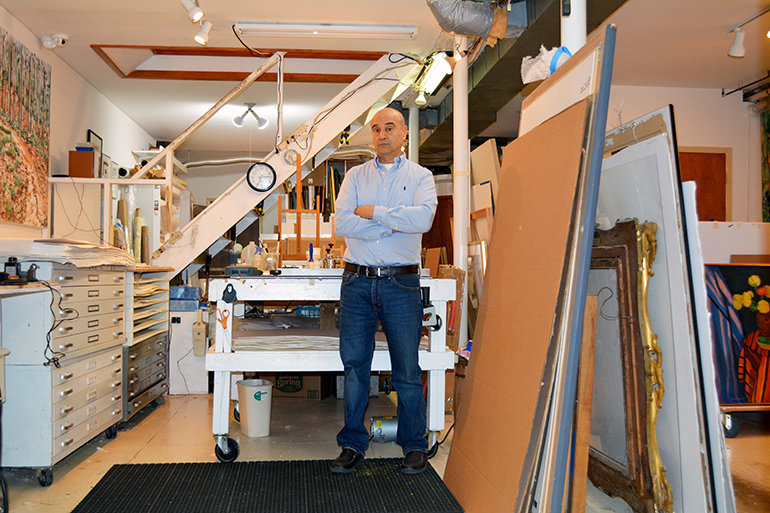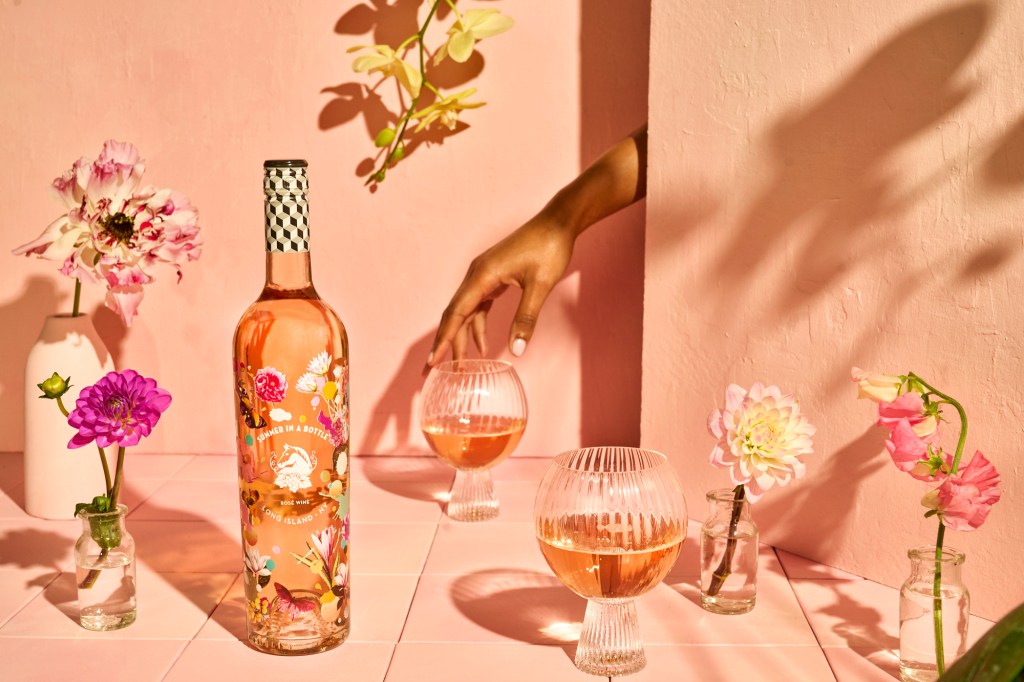Master Craftsman: Lawrence Castagna, Art Conservator

All collectors of fine things hope, or even expect, their treasures to last and survive for generations, but bad luck, happenstance and the ravages of time regularly foil such wishes. It’s a difficult truth. Thankfully, certain highly skilled individuals can repair damage, reverse aging and bring the old and broken back to a new and beautiful state.
Springs art conservator Lawrence Castagna, of Lawrence Castagna Fine Art Conservation & Restoration, has spent the last 28 years resurrecting important pieces of art for museums, galleries, corporate and private collections, and historical societies all over the world. He lives for the work and boasts a pedigree in the business few can equal.
Castagna started his career as a studio assistant for legendary Abstract Expressionists Willem and Elaine de Kooning in Springs from 1982–86. He then moved on to train with top New York City art conservator and restorer Orrin H. Riley before setting out on his own path.

Hidden away in his Springs studio today, not far from the de Koonings’ old studio, Castagna oozes hard-won confidence and facility earned over decades in his profession. During a tour of his workspace, the restorer delves deep while discussing his impressive array of tools and equipment, sparing few details about the complex endeavor of turning back time.
He’s customized and refitted much of the gear—including three vacuum heat tables, a pair of cold paper suction tables, fumigation and humidity chambers, a spray room and workbenches—to suit a litany of needs that evolves continuously in proportion with his business and experience. Amid the chemicals, solvents and mementos from his storied life, visitors will find many of Castagna’s work surfaces accommodating impressive projects in different stages of completion.

Whether he’s fixing an injured antique Chinese scroll, filthy and cracked oil paintings, three-dimensional works on paper in need of refreshing, a huge black-and-white photo dislodged from its housing, or even a painted plaster bust with an angry fissure along its back, it’s clear Castagna is not limited by medium, style or era. Each restoration is supported with thorough documentation, chronicling the conservator’s process in detail from start to finish, leaving nothing out for museum archivists, auction houses or future restorers who must know exactly what he did to revive the masterpiece.
“Artists make good conservators,” Castagna says of his success. He was an aspiring painter when he took the job with the de Koonings, but he was practical enough, even then, to learn an income-generating trade. Opportunity struck after Castagna volunteered to transport some of Willem de Kooning’s art to Riley for restoration in New York. “There were a whole bunch of paintings from 1947 that were rolled up,” he says, recalling how he saw Riley’s studio while dropping them off, and left with a new path in mind.

“He was really the top-notch guy,” Castagna points out, noting that Riley learned from Gustav Berger, a renowned art conservator who literally wrote the book on the subject. Published in 2000, Berger’s Conservation of Painting: Research and Innovations detailed his ingenious ideas, which positively and irrevocably changed the paradigm. “Gustav Berger is the father of modern art conservation,” Castagna says. “I copied my valves and tables from Riley and he got that from Berger, so I’m part of that lineage,” he adds, describing just one of many things he inherited from the author and innovator. “I’m pretty proud of that.”
His apprenticeship started simple, but Castagna moved his way up the line, following Riley’s instruction and learning from the best. “I trained on stuff like Pablo Picasso,” he says, showing off three of Picasso’s stretchers he salvaged at the time. Riley asked him to dump the stretchers—one of which still has the artist’s handwriting on it—after removing the precious canvases, but Castagna couldn’t do it, and he was allowed to keep them.

Since establishing himself in the business, Castagna has worked as Guild Hall’s conservator and restored works by numerous local greats, including Jackson Pollock, Lee Krasner, Larry Rivers, James Brooks, Jack Youngerman, Andy Warhol, Alfonso Ossorio and, of course, the de Koonings, among many others. “I worked with them while they were alive and now that they’re dead,” he says of artists like Ossorio and de Kooning. “It’s an eerie feeling.”
Perhaps his proudest accomplishment, Castagna has worked closely with the American Kennel Club, conserving its massive collection of 19th and 20th century dog paintings since 1994. The restored art will now be collected and displayed at the new Museum of the Dog, opening in Manhattan next year (after it moves from St. Louis, MO).

“We consider ourselves fortunate to have found this master restorer, and would not hesitate recommending him to anyone needing and seeking this type of unique talent,” American Kennel Club President and CEO Dennis B. Sprung wrote of Castagna.
Considering the years of training, patience and innovation required to achieve what Castagna has, the Hamptons, too, should count ourselves lucky have him.

Learn more at castagnafineart.com.
READ MORE MASTER CRAFTSMAN PROFILES
Master Craftsman: Jean-Michel Andriot, Fine Backgammon Boards, Studio Jean-Michel
Paul Vogel, Bookbinder, Vogel Bindery
Helen Gifford, HelenBilt Lighting Design
Gary Anderson, Tool & Die Maker, Machinist, Fabricator
Heather Dunn-Kostura Faux Finishes
Richard Cohen and Jim Kutz, Rockwater Ltd.
Laura Sanatore, Interior Designer, Hampton Design
Joe Kline & Curt Dahl, Joseph & Curtis Custom Wine Cellars
Frank Dalene, Custom Contractor, Green Innovator
Lori Guyer & John Mehrman, White Flower Farmhouse
Maximilian Eicke, Furniture Designer



